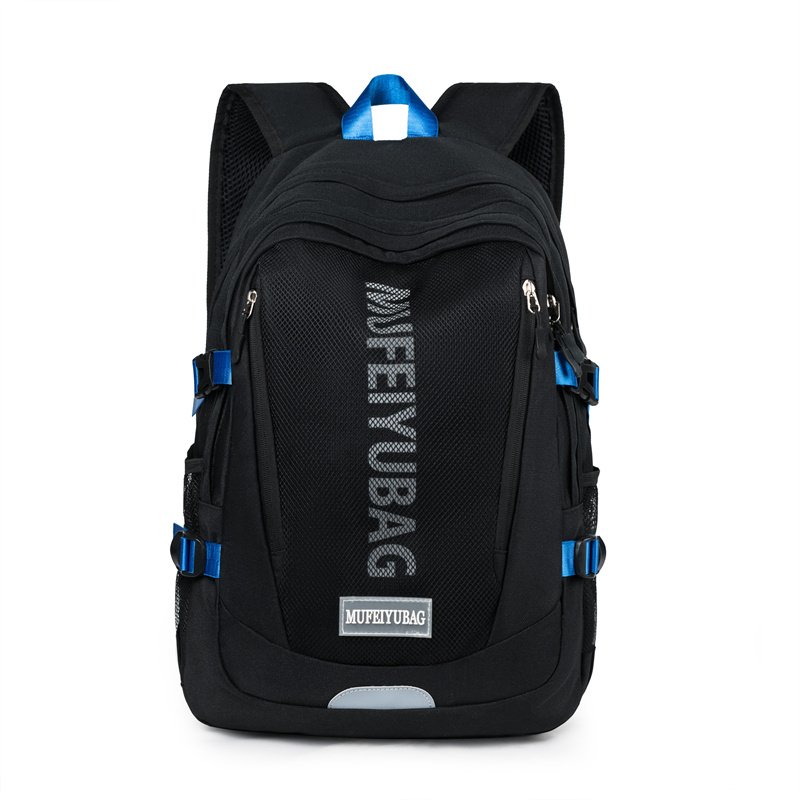
Starting high school ushers in a new and exciting chapter filled with academic challenges and personal growth. Amidst the bustling environment of high school hallways, a reliable backpack becomes an essential companion. The right backpack not only carries the tools for learning but also contributes to a student’s comfort and daily convenience. Here are some critical aspects to think about when choosing the perfect backpack size.
Understand Your Personal Needs
Textbooks and Study Materials
High school curriculums are diverse, demanding a substantial collection of textbooks, workbooks, and study aids. It’s common to juggle multiple hefty textbooks for core subjects like physics, history, and math, along with notebooks, binders, and various stationery. For instance, a physics textbook might be thick and heavy, while notebooks for different classes can quickly pile up. To determine the right backpack size, take an inventory of your daily load. A student with a full schedule of STEM and liberal arts courses may require a backpack with a larger main compartment to stack textbooks neatly, while also having space for loose-leaf papers and folders.
Electronic Devices
In the digital era, laptops, tablets, and smartphones have become integral to high school learning. Many students rely on laptops for note-taking, research, and online assignments, and tablets for reading e-textbooks or accessing educational apps. Thus, a backpack must have a dedicated, padded compartment for these devices. A well-designed laptop sleeve, with sufficient cushioning and a secure closure, can protect your costly computer from accidental bumps and scratches. Additionally, having a separate pocket for chargers and accessories keeps everything organized and easily accessible.
Extracurricular Activities
High school is also a time for students to explore their passions outside the classroom. If you’re involved in sports, you’ll need to carry items like cleats, shin guards, a water bottle, and a change of clothes. For musicians, instruments such as a clarinet, a set of drumsticks, or a small ukulele must fit comfortably in the backpack. In such cases, a backpack with multiple compartments and larger overall dimensions is essential. These compartments can separate sports gear from study materials, preventing dirt and moisture from ruining textbooks or electronics.
Consider the Backpack’s Capacity
Capacity Units
Backpacks are typically measured in liters (L), which provides a clear indication of their storage space. A 20 – 30L backpack is ideal for students with a light load, such as those who mainly carry a few textbooks, a notebook, and some basic stationery. However, for students with a more comprehensive set of materials, a 30 – 40L backpack offers more room. This larger size can comfortably hold textbooks for all major subjects, a lunch box, a gym towel, and a water bottle, without feeling overly stuffed.
Adaptability and Expandability
Some backpacks come equipped with adjustable features that add versatility. For example, backpacks with drawstrings or expandable panels can be adjusted according to your daily needs. On days when you have fewer books, you can cinch the drawstrings to reduce the volume and keep the backpack compact. Conversely, on days with a heavy load, expand the panels to create more space. This adaptability ensures that your backpack remains functional throughout the school year, even as your needs change.
Ergonomic Design and Comfort
Load-Bearing System
The design of the shoulder straps, chest straps, and waist belt is crucial for comfortable carrying. Wide, padded shoulder straps distribute the weight evenly across your shoulders, reducing the risk of strain or discomfort. A chest strap helps keep the backpack in place, preventing it from swaying as you walk or run between classes. The waist belt, when properly adjusted, transfers a significant portion of the weight to your hips, which are better equipped to handle heavy loads. This is especially important when your backpack is filled with heavy textbooks and supplies.
Breathability Design
Long hours of carrying a backpack can cause sweating and discomfort, especially in warm weather. Backpacks with breathable back panels are designed to address this issue. These panels are often made of mesh or perforated materials that allow air to circulate between your back and the backpack. This ventilation helps keep your back cool and dry, making the backpack more comfortable to wear for extended periods, whether you’re walking to school, attending classes, or commuting.
Choose the Right Material
Durability and Waterproofing
High-school backpacks endure a lot of wear and tear. They are tossed around lockers, carried on buses, and exposed to various weather conditions. Materials like nylon, canvas, or polyester are popular choices due to their sturdiness. Nylon is lightweight yet strong, resistant to abrasion, and often treated to be water-resistant. Canvas, on the other hand, offers a classic look and good durability, and can be made waterproof with proper treatment. Polyester is also a durable option, known for its resistance to wrinkles and fading. Additionally, a waterproof or water-resistant coating is essential to protect your textbooks, notebooks, and electronics from rain, snow, or accidental spills.
Weight Considerations
The weight of the backpack itself can significantly impact your comfort, especially when it’s already filled with heavy items. Opt for a backpack made of lightweight materials without sacrificing durability. A heavy – duty backpack made of thick, heavy – weight fabric may be tough, but it can quickly become a burden to carry around all day. Look for backpacks that use lightweight yet strong materials, such as rip – stop nylon, which provides both durability and a reduced overall weight.
Function and Storage Design
Multiple Compartments and Pockets
A well-organized backpack has multiple compartments and pockets to keep your items in order. A dedicated laptop compartment, a separate pocket for pens and pencils, and a key pocket can save you precious time when searching for items. For example, having a zippered pocket for small items like flash drives, earphones, or highlighters ensures that they don’t get lost at the bottom of the backpack. A compartment specifically designed for notebooks can keep them flat and prevent pages from getting bent.
External and Internal Pockets
External pockets are incredibly convenient for items you need to access frequently. A side pocket for a water bottle allows you to take a sip during breaks without having to open the entire backpack. An external pocket for sneakers or an extra layer of clothing, like a windbreaker or a sweatshirt, can keep these items separate from your study materials. Internal pockets, on the other hand, are useful for storing more valuable or delicate items, such as your wallet, ID card, or a fragile calculator.
Style and Personal Preference
Color and Style
Your backpack is not only a functional item but also a reflection of your style. While choosing a backpack, consider your taste and the school’s dress code. Some students prefer a sleek, minimalist design in neutral colors like black, gray, or navy, as they are versatile and suitable for any school environment. Others may opt for bold, colorful designs or patterns that express their individuality. Just make sure the style you choose adheres to the school’s regulations regarding appearance.
Brand and Reputation
Opting for a well – known brand with good reviews can give you peace of mind. Reputable brands often invest in quality materials, innovative design, and rigorous quality control. They are more likely to offer backpacks that are durable, comfortable, and meet high – standards of functionality. Reading online reviews from other students or parents can provide valuable insights into the performance and reliability of different brands, helping you make an informed decision.
Budget
Balancing Price and Quality
Setting a budget is an important step in choosing a backpack. While higher-priced backpacks may offer superior quality, comfort, and durability, many budget-friendly options provide excellent value for money. High-end backpacks may use top-of-the-line materials, have advanced ergonomic features, and offer a longer lifespan. However, if you’re on a tight budget, look for sales, and discounts, or compare prices across different retailers, both online and in-store. You may be able to find a great backpack that meets your needs without breaking the bank.
Long-Term Use Considerations
Durability and Applicability
Investing in a backpack that can serve you throughout high school and potentially for a few more years is a wise choice. Brands that offer long-term warranties and good after-sales service are more likely to stand behind their products. A backpack with a long warranty period indicates that the manufacturer has confidence in its quality and durability. Additionally, consider the backpack’s versatility. A backpack that can adapt to different stages of your academic and personal life, such as from high school to college, is a more practical investment.
In conclusion, choosing the right backpack size for high school requires a careful assessment of your personal needs, the backpack’s features, your style preferences, and your budget. By taking the time to consider these factors, you can find a backpack that will not only carry your essentials but also accompany you comfortably and reliably throughout your high – school years.



